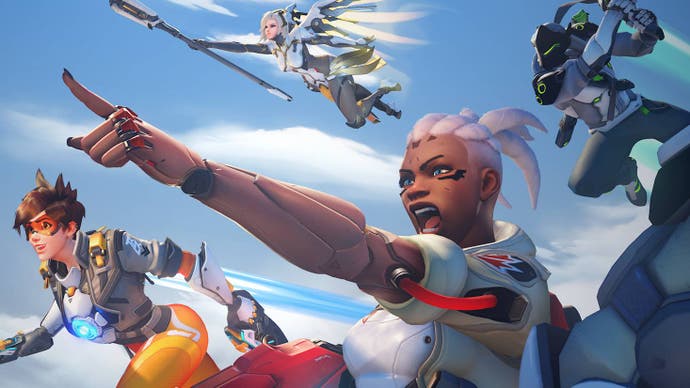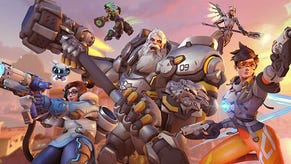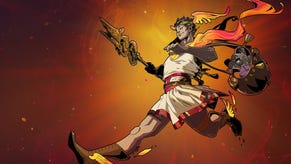Overwatch 2 review - a brilliant teamplay experience in the grip of an existential crisis
Tracer of doubt.
Overwatch is a superhero story, and if there's one thing superheroes adore doing in their marketing materials, it's staring dramatically outward at something you can't see. Overwatch 2's launch menu art is a classic example of this - and also, a convenient cross-section for the game's wonderfully varied, albeit mostly returning characters. There's Tracer, original mascot and the game's worst troll, using her teleport dash to mess up the enemy rearguard, then rewinding herself to safety. There's Mercy, a single-target healer who handles like a ninja given a well-spaced team, with the ability to swoop towards allies. And Genji, an actual ninja - terrifying with his sword unsheathed, a puny, scuttling annoyance to any hero whose shots he can't parry.
Heading the group is Sojourn, one of Overwatch 2's three new faces at launch, a nimble Damage hero who is all about chaining things together - knee-slides into high jumps, rifle shots into energy for her auxiliary railgun. The only hero class missing from the picture is the Tank. But wait, I think that's Winston's elbow in the bottom corner, Winston being a giant, kindly ape whose job is to bellyflop the objective, chuck up a forcefield and bathe everybody outside it in a soothing cloud of electricity. Five exquisitely different characters out of a running total of 35, all of them gazing raptly at the top-left corner of the screen.
What could they be staring at? If this were a Marvel movie poster it would be some villain from the back catalogue, or the concept of Hope. This being Overwatch, a game whose save-the-world premise boils down to massacring everybody regardless of narrative allegiance for control of static or moving objectives, it's probably an opposing team. Experimenting with hero match-ups was and is Overwatch's core thrill, above and beyond the act of simply winning, and you can imagine some fun possibilities here. Tracer has the ecstatic grimace of a player who's just spotted the other side's Torbjörn trying to sneak off and plant a turret somewhere. Mercy looks like she's a second away from realising that she's left her tank escort behind, and two seconds from being sniped by the enemy Hanzo. Sojourn has the pop-eyed expression of the one, strategically-minded team member furiously spamming "group up" while trying to squeeze a round through Reinhardt's shield.
But perhaps what they are really gazing at is what Overwatch 2 could be, given, oh, at least a year's worth of updates. Overwatch 2 is more marketing event than sequel right now, a free-to-play reboot of the 2016 teamplay shooter that is plainly designed to keep the existing PvP community afloat ahead of Actual New Stuff like the much-demanded story-driven co-op modes, which are currently scheduled for 2023.
All of the original heroes have been tweaked, a couple (Orisa and Doomfist) to the point of switching classes, and there's a fresh spin on escort mode, Push, in which you babysit a galloping robot. These additions sit alongside structural changes such as reducing the headcount to five-a-side, and a restriction to just one Tank per team in Competitive modes. Blizzard has also overhauled the graphics, though I'd challenge anyone to notice the difference without putting the two games next to each other. This is no longer possible, of course, because Blizzard has taken the original Overwatch offline, which perhaps explains the ferocious DDOS attacks that have contributed to the most catastrophic online launch in recent memory.
Its overwriting of Overwatch 1 aside, Overwatch 2's most controversial element is the new Battle Pass monetisation system, whereby players either pay real money to unlock each nine-week season's spread of cosmetics and new features, or crank out match XP to acquire them one by one, completing time-limited challenges to accelerate the process.
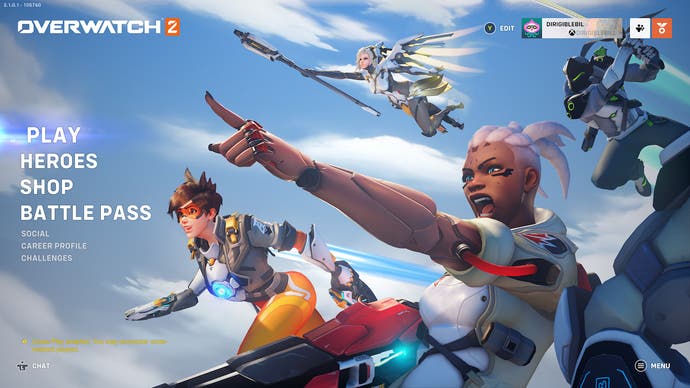

This has justifiably annoyed the hell out of returning players, but the system isn't that obnoxious by free-to-play standards - damning with faint praise, I know. Most of what you unlock is just optional flair, and the asymmetrical nature of Overwatch PvP makes for less chance of a straightforward power gap when it comes to premium Pass owners bagging each season's single new hero weeks in advance. While the challenges are theoretically at odds with teamplay in encouraging you to, say, play Support regardless of the situation, I've found that they serve as a pleasing, light-touch way of steering the PvP community, luring you towards overlooked characters or modes.
Grinding to unlock a new hero every season without paying is undeniably onerous, however. Efficiency levels will vary, but the first season's pacing suggests you'll need to play every day, and I can imagine players giving up and shelling out for premium if they find themselves a few tiers short with a day to go. Beyond that, there's that familiar sense of F2P ennui from knowing that the game is always trying to sell you something, however elegantly. Overwatch has always been good at slyly guiding player behaviour - for instance, the fact that each hero has a distinct audible gait, triggering specific muscle memories even before you see them. It's depressing to think of all that insight being applied to the curation of yet another content stream that is fluid enough to be habit-forming, but sluggish enough to tempt out an impatient purchase now and then.
The new heroes are, so far, not really worth either paying or grinding for, though they're clever creations in themselves. The problem is that they're designed to fill gaps in the existing repertoire, rather than to add new styles, often stealing their best tricks from old characters. If you're a seasoned veteran, you'll probably be underwhelmed. If you're new to the franchise, the existing cast are quite enough to be getting on with - and in any case, the new heroes are mostly geared for experienced players.

The easiest to pick up is Sojourn, with her no-nonsense rifle: you can make a contribution to the match just by blasting away as you follow the payload, taking your time to master those underlying alternations between rifle fire and railgun shots, sliding and jumping. The trickiest is probably Junker Queen, an Aussie tank who can bellow at team-mates to buff them, and who keeps herself alive by leeching health with short-ranged strikes, rather than cowering behind a shield. She can throw and recall her dagger Thor-style, often catching victims on the return flight, but she really needs to close the gap to be effective, relying on Damage heroes to cover her approach.
This reliance is, of course, more pressing in Competitive modes with only one tank slot per team. My total inability to make headway as Junker Queen notwithstanding, I think this new restriction is a smart adjustment, though not transformative. It avoids the classic gambit of fielding two or three tanks to win through sheer attrition, while making the tank player's skill and choice of hero more significant. If you love wading through multiple health bars and energy barriers, you can still field a multi-tank apocalypse in Unranked play, to say nothing of the often-broken, player-created modes in the Arcade suite.
New players may also struggle with Kiriko, a combat medic with powerful throwing kunai in one hand and a bunch of homing health talismans in the other. Her movement abilities blend Genji with Mercy - she can scuttle up walls and teleport to allies through surfaces, allowing her to shadow a faster Damage hero while another healer supports your tank. But it takes nerves of steel to play her aggressively. The kunai are slow, requiring that you lead flanking targets, which makes it safer to stick to the centre and hurl them into oncoming adversaries.
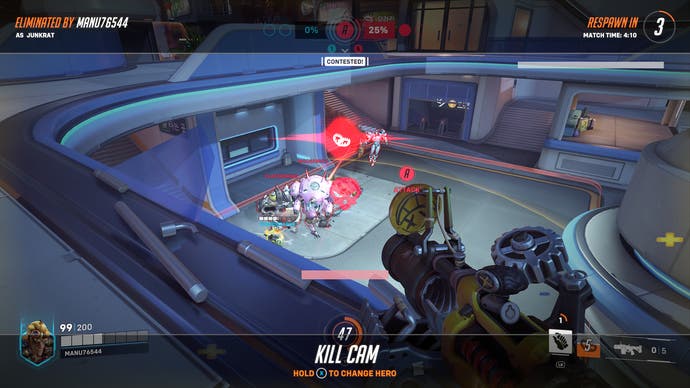
If Kiriko has pronounced weaknesses, she also gets the best Ultimate of the newcomer trio - Ultimates being slowly charging, potentially tide-turning super abilities. Her Kitsune Rush creates a sort of holographic Power-Up corridor, boosting allies while funnelling them toward the objective. Junker Queen's Ultimate, by contrast, is a lacklustre galloping windmill attack, while Sojourn just gets to blaze away without reloading for a few seconds.
Those last-ditch pushes are still Overwatch's greatest highs, the orchestral score spiking your pulse as you try to single out the heroes you're strongest against while three or four Ultimates pop off simultaneously. The reduced match headcount isn't really a factor during these chaotic, compressed finales, but it makes the midgame a touch more forgiving. Groups are easier to break up through surgical ability use, and there's slightly more leeway to take side routes without falling afoul of Sombra, who remains the most irritating stealth character ever devised.
Going by its launch showing, I suspect Overwatch 2 will continue to stumble occasionally with its representational politics. The wider question is, where is it stumbling to?
Speaking of Sombra, the 2016 game distinguished itself from both rival shooters and Blizzard's previous work with its diverse and inclusive character designs, which I think have had a lasting, positive impact on the famously noxious world of online multiplayer. Just look at the deluge of fan theories, cosplays, webcomics and memes that have grown up around its cast - players fleshing out the personality dynamics suggested by the relationships between those asymmetrical movesets, redefining PvP as a kind of extended, all-accepting family soap opera in which Soldier 76 is a world-weary dad, Pharah and Mercy are the ultimate power couple, and Reaper just needs a hug.
But these gestures ring rather hollow following last year's revelations of a toxic "fratboy" culture at Blizzard, and even with good intentions, there continue to be missteps - in Overwatch 2's case, the choice of a third Japanese hero who is yet another ninja or samurai derivative, which betrays a fundamental issue where having fun with cliches becomes an embrace of racial stereotypes. You also see this in the design of character skins, which reflect a pick-and-mix approach to marginalised cultures - giving the Egyptian hero Pharah a Native American paintjob with belated reference to her backstory, for example.
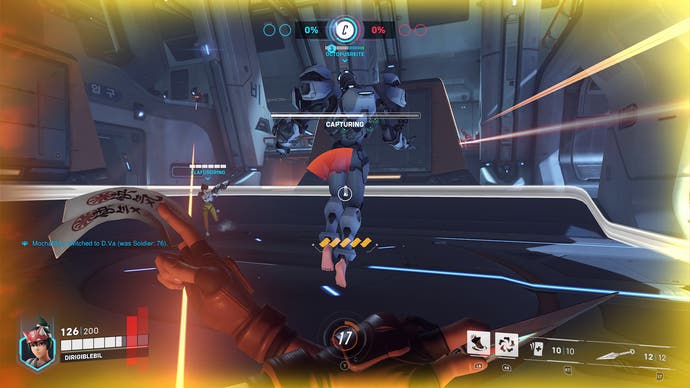
Art is not life, of course, and in any case, it doesn't matter how immaculately right-on your characters are if they're the work of a company that harbours abusers. But that lingering tendency to stereotype is more conspicuous in a game animated by the idea that "everybody can be a hero". All told, Overwatch is better thought of not as the eternally sought Progressive Blockbuster but a useful carnival mirror for gaming's on-going culture wars, especially when it comes to its career as an esports experience. Look at how Mercy has evolved over the years - her original mass Resurrection Ultimate was reviled partly because it overlapped in certain imaginations with the thought of women "stealing" the accomplishments of more talented men, who of course play DPS.
Going by its launch showing, I suspect Overwatch 2 will continue to stumble occasionally with its representational politics. The wider question is, where is it stumbling to? I'm not privy to the detail of Blizzard's forthcoming co-op modes, but let's be honest, we've seen Overwatch do PvE before and it's never felt like more than a nice distraction. The PvP is still some of the best multiplayer you can find this side of Smash Bros and Team Fortress, but all those incremental additions create a sense of dying by inches. I would rather play a proper, Street Fighter IV-esque sequel which shucks off or transforms the original frameworks entirely. As things stand today, Overwatch 2 feels like yet another service game where unlocks lead off into perpetuity, purely because money has to be made. It's got its eyes on the horizon, and the same old spring in its step, but I'm not sure it has anywhere to go.
